Make your own tomaisins today!
It’s last harvest week here at our place, Gentle Readers, so get ready for a barrage of harvest hints and storage tips and a few recipes, too! Just grab a cup of bulletproof coffee to get your energy up . . . we’ve still got a few days before all is frozen outside.
You’ve got to admire the work ethic of the lowly cherry tomato. If you plant one plant, you’ll have enough cherry tomatoes to satisfy your family and all their cherry tomato needs. If you plant twenty plants, with fruits of varying colors, shapes and sizes (as some people do) (ahem) . . . well . . . you’ll need to get a little creative on what to do with all those bitty and nutritious little bites of sunshine. Especially if you happen to learn about lycopene.
I’ll share with you what I’ve learned about lycopene (you are going to want to know, trust me!) after I list the varieties that I planted this year–and why I planted them, for those of you who are curious about such things (what??! I am curious!):
- Yellow Pear: I love the dainty pear shapes, and my mom always grew them.
- Tomatoberry: very sweet, shaped like a strawberry, and a bigger size,
- Tess’s Land Race Currant: tiniest of them all, tart and very productive (plus, I really get excited when I think about those pre-1900 land races, don’t you?)
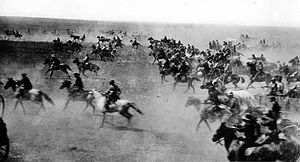
image credit goes to Wikipedia
- Sun Sugar (the sweetest that I’ve raised, and beautiful glowing golden-yellow)
- Jujube (such a cute shape!)
- German Orange Strawberry (you can’t have too many strawberry-shaped tomatoes)
- Chocolate Stripe (very unusual coloration and very mild in flavour)
- Chocolate Cherry (I do have a mild obsession with chocolate)
Because I planted so many delightful varieties, I have an exuberant plurality of beautiful, sparkling little cherry tomatoes in my garden, at this very moment–on the ground, covering the plants, and so on. I’d like to know how many cherry tomatoes I have out in my garden at this moment. Thousands, I’d reckon. Tens of thousands? Could be.
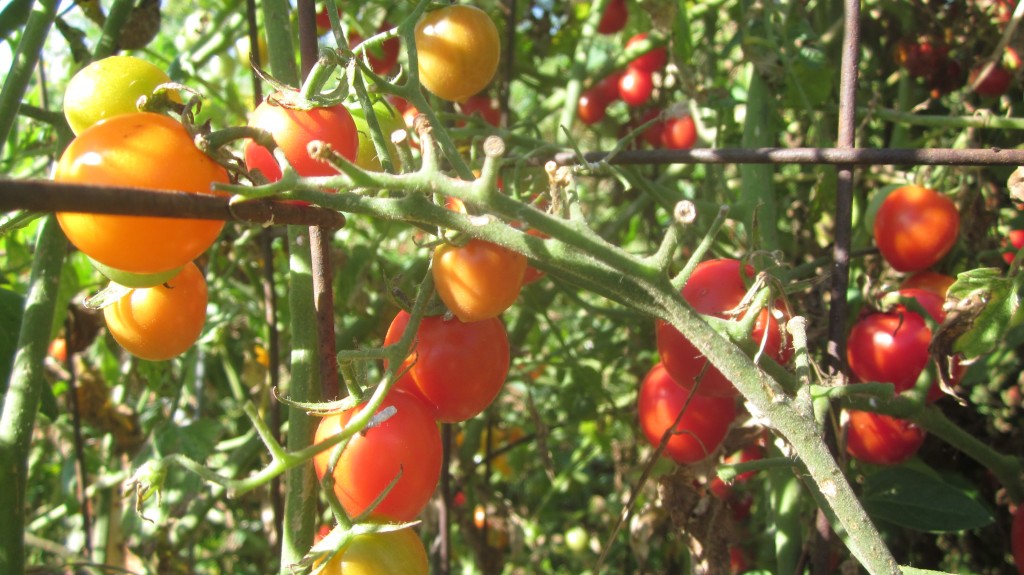
Cherry tomato plants: do they EVER take a break from producing? We could all learn a lesson from them, I’m thinking.
Which made it so painful to me when I read the other day, in a new book (I’ll do a review of it soon . .) called Eating on the Wild Side: the Missing Link to Optimum Health, by Jo Robinson (hint: it’s awesome!) that cherry tomatoes, in general, contain many times the nutrients in them that large tomatoes have.
Now comes the place in this post where we talk about Lycopene. Aren’t you relieved? Aren’t you happy? It’s important stuff. That’s why I keep making it bold and repeating it: Lycopene. Lycopene. LYCOPENE! Now you’ll remember it, and I will too!
Lycopene is the natural substance responsible for the deep red color in many foods, most particularly in tomatoes. You probably already knew that, right, Gentle Reader? Lycopene is becoming quite important to food scientists and informed eaters because of its plethora of health benefits, to wit: it’s a powerful cancer-fighting agent and a really great antioxidant.
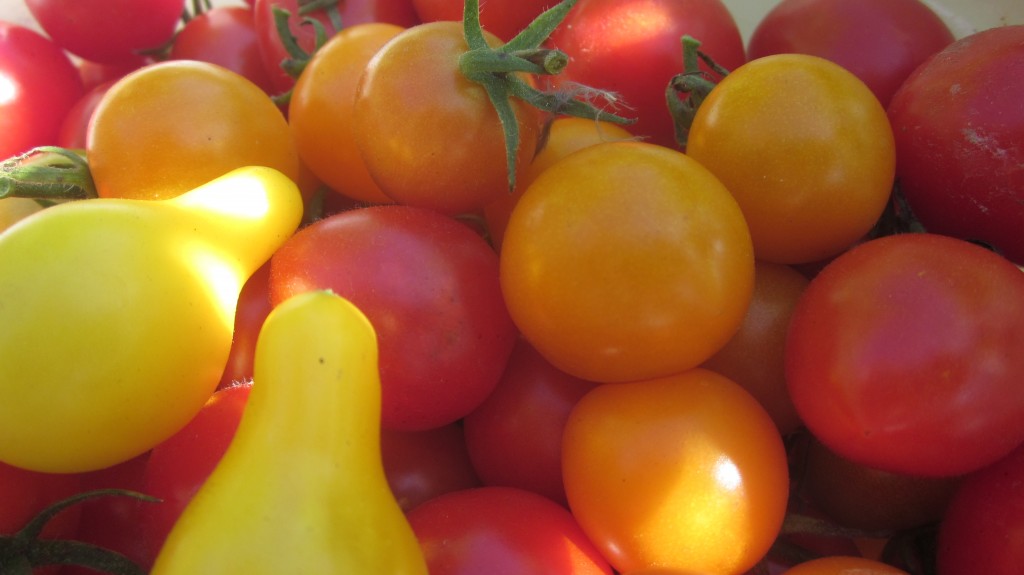
The following are some foods that contain high concentrations of lycopene:
- Tomatoes
- Pink Grapefruit
- Pink Guava
- Watermelon
- Papaya
- Rosehips* (surprisingly!)
How Lycopene Functions
Lycopene is allegedly a more effective antioxidant than many of the carotenoids. (Carotenoids are a group of A vitamins that include beta-carotene, lycopene and lutein and are leading forces in the fight against free-radical damage. Free radicals are associated with serious diseases, including macular degeneration and types of cancer. Carotenoids also promote healthy skin, bones and immune function.)
The powerful antioxidant actions of lycopene are effective in maintaining the strength, thickness and fluidity of cell membranes. Cell membranes, of course, are the guardians of cells, and if you remember this from high school biology class, then I am impressed! They are responsible for screening what goes in and out of cells. They allow good nutrients in and remove cellular junk and prevent toxins from entering the cells. Strong healthy cell membranes are vital in the prevention of many diseases.
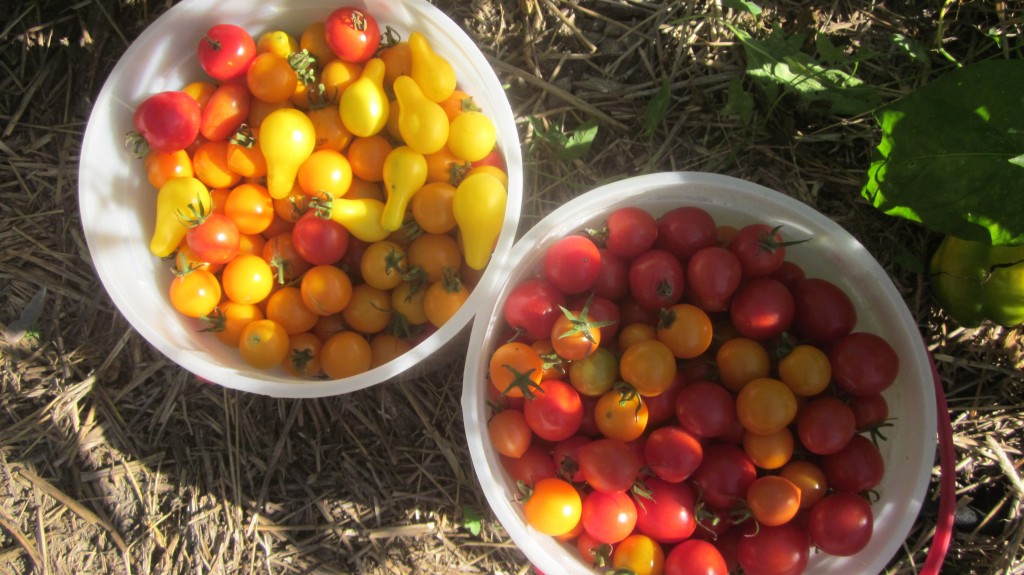
Lycopene is well known specifically to help prevent many forms of cancer as well as the prevention and treatments of many illnesses and diseases such as:
- Heart disease: Lycopene stops LDL cholesterol from being oxidized by free radicals and in turn cannot be deposited in the plaques which narrows and hardens the arteries.
- Infertility: Research suggests that lycopene may help in the treatment of infertility. Results from tests showed that lycopene can boost sperm concentration in men.
- Helps prevent diabetes
- Prevents age-related macular degeneration and cataracts
- Prevents the aging of skin and keeps it younger looking (I can dig this!)
- Acts as an internal sunscreen and protects your skin from sunburn
- Can help prevent osteoporosis
Lycopene sounds like a dream come true, doesn’t it, dietarily-speaking?
So here’s the cool thing I learned from Robinson’s new book, and also why I was scrabbling out in my garden picking bucket after bucket of cherry tomatoes, and also why I have three pans full of cherry tomatoes in my oven even as I type:
Cherry tomatoes (especially the tiny currant ones) contain up to ten times the quantity of lycopene as their larger tomato cousins. Ten times. Ten times. TEN TIMES.
Isn’t that astonishing? Isn’t that remarkable? Isn’t that astonarkable?? I have much more to share on the subject, but it’ll have to wait until I finish reading the book. But I’ll leave you with this one tidbit: apparently all tomatoes used to be the size of currant tomatoes (that is, very very small) and that’s why today’s currant tomatoes are the most nutritious of all tomatoes. They are, in essence, tomatoes in their original state. They are the true original heirloom tomatoes: tiny, and tart, and absolutely packed with Lycopene. Lycopene!
Just a handful of cherry tomatoes—especially the tiny currant ones—can supply you with more lycopene than more popular sources such as grapefruits or watermelon.
So, Gentle Reader, do you still have a cherry tomato planting producing like heck in your fall garden? Then you can still take advantage of this excellent source of Lycopene. I know, however, that a person can only eat so many cherry tomatoes per day. My mouth–full of cold sores, alas–can attest to this sad fact.
So here’s what I’m doing (and what I suggest you do, too, if you’ve got a delicious glut of cherry tomatoes dropping off the vines in your garden!): I’m oven-roasting my cherry tomatoes.
Oven-roasting cherry tomatoes makes them into chewy, tangy, zesty little tomato-raisins (tomaisins!) that will add magic to your sauces and soups, and are just plain addictive eaten as snack foods, too.
Once you’ve had a taste of these tangy, cherry tomatoes painlessly oven-dried at home, you’ll never go back to that inferior, expensive, store-bought sun-dried stuff. You may even plant an extra cherry tomato plant next summer, just so you’ll have a few more to dry!
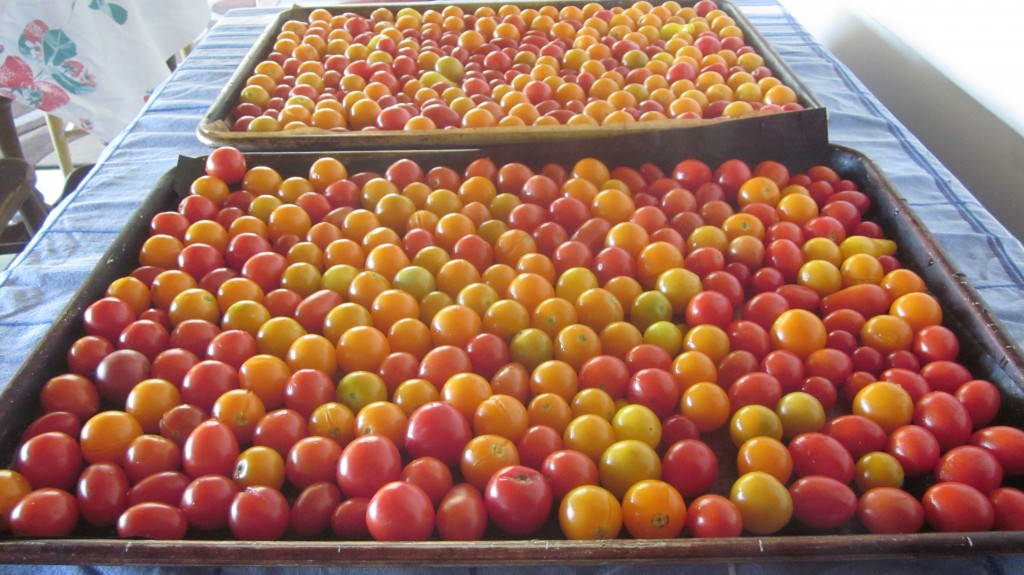
Here are my cherry toms all ready to go into the oven.
Here’s how I make oven-dried cherry tomatoes:
- Wash, sort and de-stem your tomatoes
- Lay in a single layer on a jelly-roll pan or another similar pan with edges.
- Add your favorite herbs (I like basil and parsley) and salt and fresh-ground pepper, and a dribble of olive oil.
- Roast in a slow oven (200 degrees or less) for 3-4 hours. Check often during the last hour, so they don’t burn. Bigger cherries will take more time than the tiny ones.
- Your “tomaisins” are done when they are wrinkled and chewy, with a raisin-like texture.
- Store in the refrigerator or freezer, unless you eat them up right away!
I plan to make another batch or two of these tomaisins, as long as our mild fall continues and the tomatoes keep producing. Kudos to my sweet sister for sharing her oven-roasting techniques with me (thanks, Mollie!).
By the way, I’m working on a recipe using my tomaisins and orzo, so check back later this week for that!
I’m sharing this post, by the way, with blog hops at The Prairie Homestead and Frugally Sustainable. Join us over at those sites and have a bit of homestead-related fun today! 🙂


What an amazing blog. I love learning new things and today my cup runneth over and amazing recipe for oven dried tomatoes. YUM
You’re very sweet, Anita-Clare, thank you. 🙂
I just love reading about all the different types of cherry tomatoes. I definitely need more variety next time I start up my square foot gardens. Added this to Pinterest.
Thanks so much, Cindy!
All these benefits in cherry tomatoes – I’m seriously blown away, especially after reading your recipe ideas and seeing the beautiful photos.
I’m following your blog from the UBC, so I just stumbled upon your article, but I’m bookmarking it for MORE reading! Gardening is something I’m new to doing but I’m very excited about getting started!
Thanks so much for the ideas, especially on the benefits of cherry tomatoes 🙂
Susan,
I hope you enjoy learning about gardening! It may become an obsession when you discover what variety you can grow in your backyard!
I had never heard of lycopene before. Those are some really neat facts.
I’ll stick with the plain old cherry tomatoes- and enjoy my raisins separately!
Awww, live a little Roy! 😉
I LOVE cherry tomatoes! I had my first dark chocolate cherry tomato just this season!! It was SO good.
I’m totally going to have to try out this raisin thing!!!
Amanda,
What’s interesting to me is how each heirloom cherry tomato has a unique taste . . some are mild, some are quite tart, some are so sweet!
I definately want younger skin. And I’ve always liked the cherry tomatoes better than the big ones. Lycopene is a miracle. I’ve heard of it before. Apparently, even tomato sauce or ketchup contains the ingredient. Next year, I’ll grow some tiny tomatoes.
Love your enthusiasm.
Yes, Francene, in fact ketchup and tomato paste are very high in lycopene!
Read part of this article to husband, who has let cherry tomatoes “air raisin” so to speak. Right now our tomatoes are basically done, so this is pinned for next year.
There’s always next year, eh, Alana . . .?? 🙂
I enjoy tomatoes any way I can get them except from a grocery store. We always plant three or four different cherry tomato plants as well as 4 or 5 of the larger type. This year I even planted one that was to grow 12 feet tall. Alas, we left for Mexico just when the tomatoes were starting to come in. At that point the plant was only about 8 feet tall. So we left all the tomatoes behind for our daughter and her family to enjoy.
Chef,
I’d like to know what that variety was, that was to grow 12′ high!
I love tomatoes & your recipes are very inventive! I hadn’t heard of some of those varieties until now!
Thanks Sophie!
Here is information about the authentic Tomaisins
Check out the website Tomaisin.net
http://tomaisin.net/